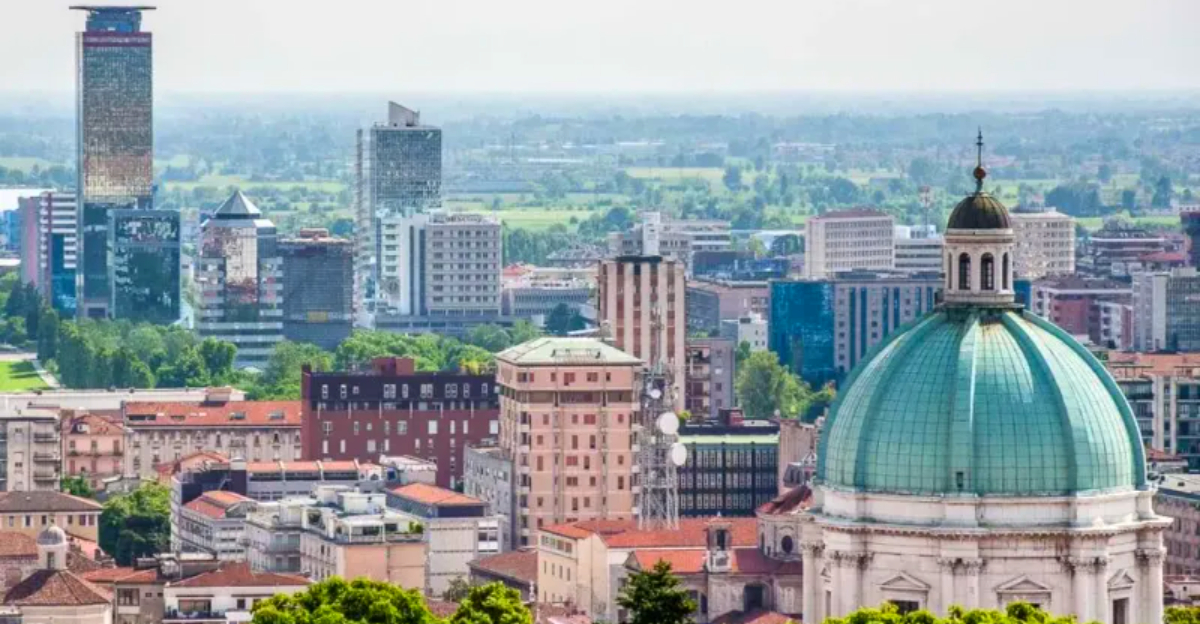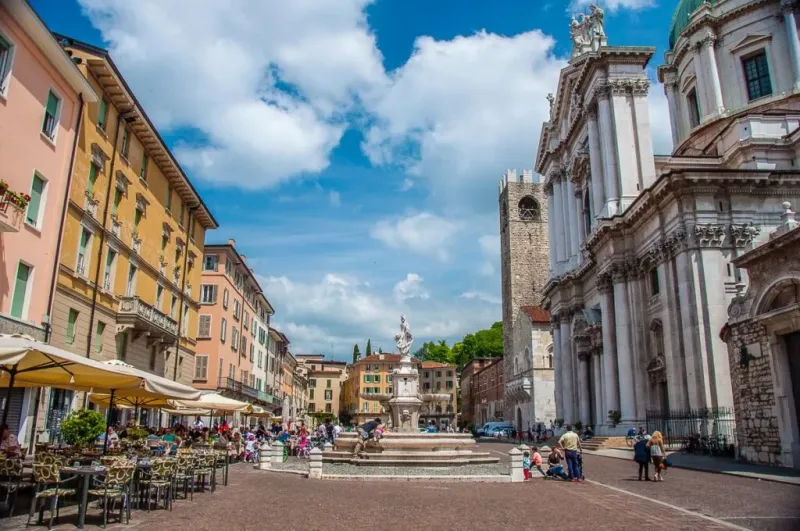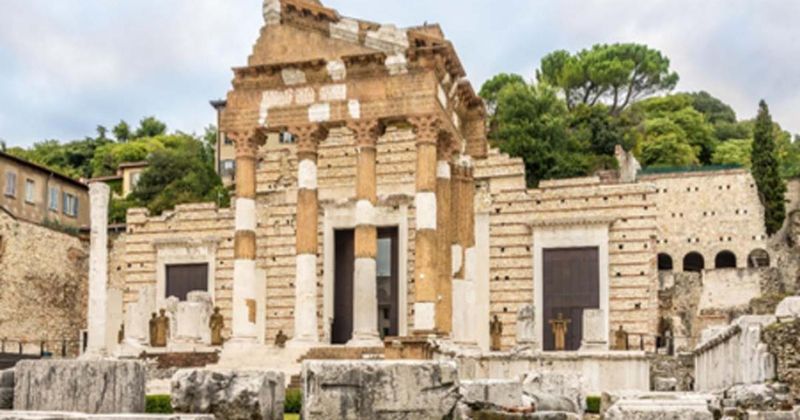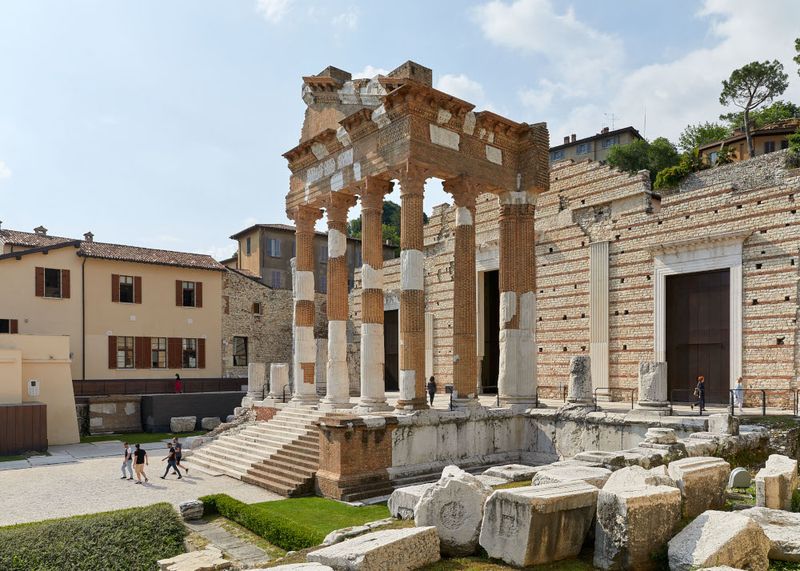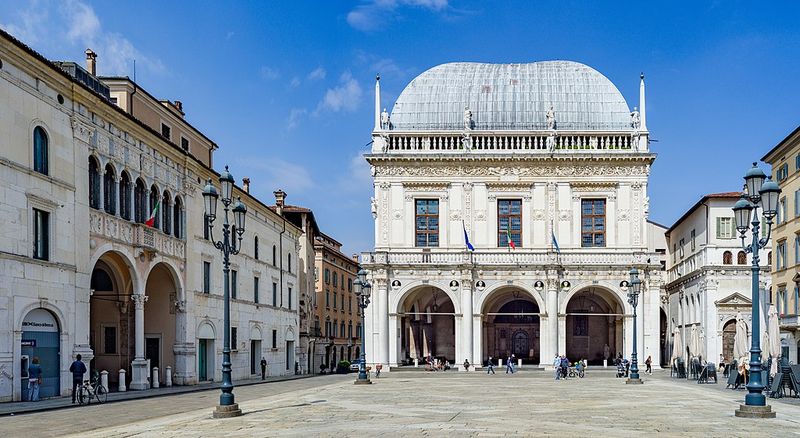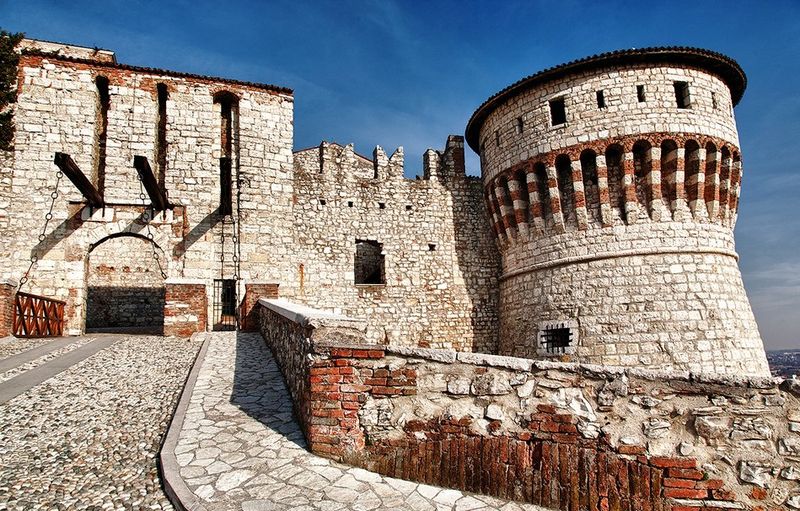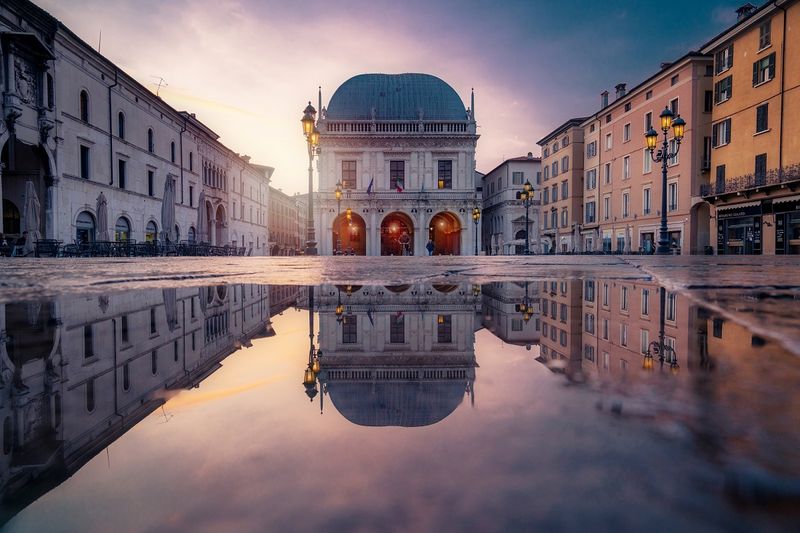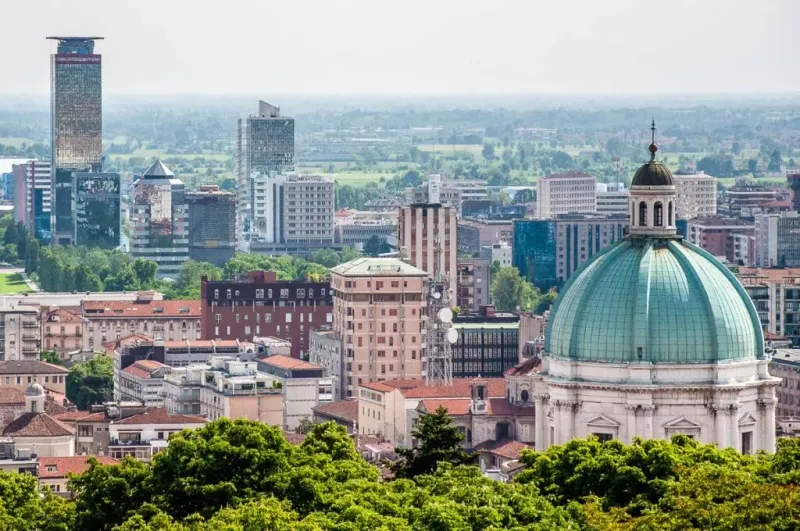Tucked between the bustling streets of Milan and the romantic canals of Venice lies Brescia, a city that most travelers overlook but shouldn’t. This Lombardy gem holds some of northern Italy’s best-preserved Roman ruins, medieval cathedrals, and Renaissance squares, all wrapped into a compact historic center. Unlike its famous neighbors, Brescia offers an authentic Italian experience without the overwhelming tourist crowds. Ready to discover why this hidden treasure deserves a place on your travel map?
1. A Strategic Location Between Milan and Venice
Brescia sits perfectly in Lombardy’s heart, making it an ideal stopover between two of Italy’s most visited cities. Travel experts rave about this location because it gives you easy access to major attractions while keeping you away from the chaos.
What makes this spot special is how it combines convenience with authenticity. You can explore stunning castles and cathedrals without fighting through endless tour groups. The train connections are excellent, so day trips to Milan or Venice take less than two hours.
Staying here means experiencing genuine Italian life. Local markets bustle with residents, not just tourists snapping photos. The surrounding Lombardy countryside, including beautiful lakes, sits within easy reach for anyone wanting more adventures beyond the city walls.
2. Ancient Origins and Roman Foundations
Long before Italy became the country we know today, Celtic tribes called the Cenomani made their home here. When the Romans arrived, they transformed the settlement into Brixia, a thriving municipium that would shape the city forever.
Walking through modern Brescia, you’ll notice how the Roman street grid still guides your path. Emperor Vespasian commissioned the magnificent Capitolium around AD 73, dedicating it to Jupiter, Juno, and Minerva—the powerful Capitoline triad.
Historians consider these ruins the best-preserved Roman public buildings in all of northern Italy. Unlike many ancient sites where you must use your imagination, Brescia’s Roman heritage stands clearly visible, woven seamlessly into everyday city life rather than cordoned off behind museum walls.
3. UNESCO Recognition for the Roman Archaeological Area
UNESCO doesn’t hand out World Heritage status lightly, which makes Brescia’s recognition even more impressive. The Roman archaeological zone, paired with the San Salvatore-Santa Giulia monastic complex, earned its place on the prestigious list as part of “Longobards in Italy: Places of Power.”
This designation covers the period from 568 to 774 AD, highlighting how the Lombards built upon existing Roman foundations. Experts describe it as one of Italy’s most significant and best-preserved archaeological treasures.
For visitors, this means you’re not just seeing old stones—you’re experiencing layers of civilization that shaped European history. The UNESCO stamp confirms what locals have known forever: their city holds extraordinary historical value worth protecting and celebrating for generations to come.
4. Layers of Architecture: Roman → Medieval → Renaissance → Modern
Brescia works like a living history book where each page reveals a different era. The Roman forum and theatre form the foundation, but that’s just the beginning of this architectural journey.
Medieval builders added their mark with the striking Duomo Vecchio, an unusual circular church from the 1100s that breaks typical Italian cathedral patterns. Renaissance architects then created elegant spaces like Piazza della Loggia, where graceful arches and refined details showcase that period’s artistic genius.
Even the twentieth century left its signature through Art Deco touches in Piazza della Vittoria. This mixing of styles could feel chaotic, but instead it creates harmony—proof that good design transcends time. Each architectural layer respects what came before while adding something fresh and exciting.
5. Highlight Sites to Visit
Start your exploration at the Capitolium, the Roman temple buried by a landslide and dramatically rediscovered in the 1800s. Nearby, the Roman Theatre once held 15,000 spectators in its 86-meter diameter—imagine the roar of ancient crowds!
The Santa Giulia monastic complex now houses the city museum, displaying centuries of art and artifacts under one roof. Don’t miss the Duomo Vecchio, nicknamed “La Rotonda” for its rare circular shape that sets it apart from typical Italian churches.
Piazza della Loggia offers Renaissance beauty through its elegant Town Hall, begun in 1492. Finally, hike up to Castello di Brescia on Cidneo Hill for sweeping city views and medieval fortress walls that protected residents for centuries.
6. Why It Feels Hidden and Worth the Side Trip
Travel bloggers consistently label Brescia as “underrated” and “lesser known,” which translates to more space for you to breathe and explore. Major monuments sit within comfortable walking distance, so you won’t exhaust yourself rushing between scattered attractions.
The compact historic center means you can cover significant ground in a single day while still feeling relaxed. Crowds that pack Milan’s Duomo or Venice’s St. Mark’s Square simply don’t exist here, giving you rare opportunities for quiet contemplation among ancient ruins.
This layering of historical periods—from Roman through modern—creates a richer narrative than cities dominated by one era. Plus, Brescia serves as an excellent base for exploring nearby Lombardy lakes while offering serious historical depth that beach towns can’t match.
7. Best Times and Practical Tips for Visiting
Spring and autumn bring the sweet spot of pleasant temperatures and manageable visitor numbers, unlike the sweltering summer months when heat bounces off ancient stones. Plan at least half a day, though a full day lets you truly soak in the Roman archaeological zone, old town, and cathedral complex.
Comfortable walking shoes aren’t optional—they’re essential. Cobblestone streets and integrated Roman remains create uneven surfaces that fancy sandals won’t handle well. The historic center rewards wanderers who can explore for hours without sore feet.
Consider combining your Brescia visit with nearby Lombardy lakes if your schedule allows extra time. This approach maximizes your northern Italy experience while keeping accommodation costs lower than staying in Venice or Milan’s expensive hotel districts.
